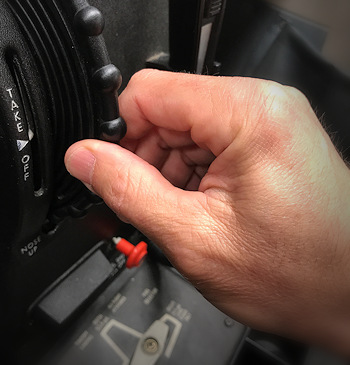Subscriber question:
"How often should I be adjusting the elevator trim during a typical flight? What's the correct technique?" - Kenneth C.
Wally:
 “Proper elevator trim technique is a very important and often overlooked basic flying skill.
“Proper elevator trim technique is a very important and often overlooked basic flying skill.
Keeping the aircraft in trim relieves the pilot of the need to constantly hold elevator pressure one way or the other to maintain aircraft attitude. This helps reduce fatigue and prevents unplanned excursions from the desired attitude if the pilot gets distracted.
Nearly every time the power is changed or the airspeed is changed the pilot needs to adjust the elevator to maintain the desired attitude. So it is safe to say that every time the power or airspeed is changed there is also a need for an elevator trim change.
The proper technique for trimming the elevator is to first establish the desired pitch attitude with elevator control and then adjust the elevator trim to relieve the control pressure.
It is particularly important to have the elevator trimmed properly for the correct speed on final approach. This will make the control feel and aircraft reaction during the flare the same on every landing. Doing this will surely improve your landings.
However, there is one place where power and airspeed are changing but one should not use the elevator trim. That is during the landing flare. Trimming nose up during the landing flare puts the aircraft in a severe nose up trimmed condition and can cause great difficulties if a go-around is required. This technique has been a factor in go-around accidents.
Now, if your airplane is also equipped with aileron and rudder trim, you have lots of options to fly hands-off. As you know, the left turning forces that affect our aircraft vary depending upon the power setting and airspeed. A properly rigged airplane should fly straight and level, hands off, at cruise power and cruise airspeed. Any deviation from that condition will cause a need for rudder pressure to maintain straight and level. For example, during climb, it is necessary to hold some right rudder to counteract the left turning tendencies. Conversely, reducing power or increasing airspeed may cause the need to hold a bit of left rudder. If rudder trim is available, I use it to avoid holding rudder pressure during climb and descent.
So, again, the proper trimming technique is to establish the desired attitude with the primary flight controls, then trim out any hand or foot pressure required.”
At what point do you make your final elevator trim adjustment during a standard landing approach?
